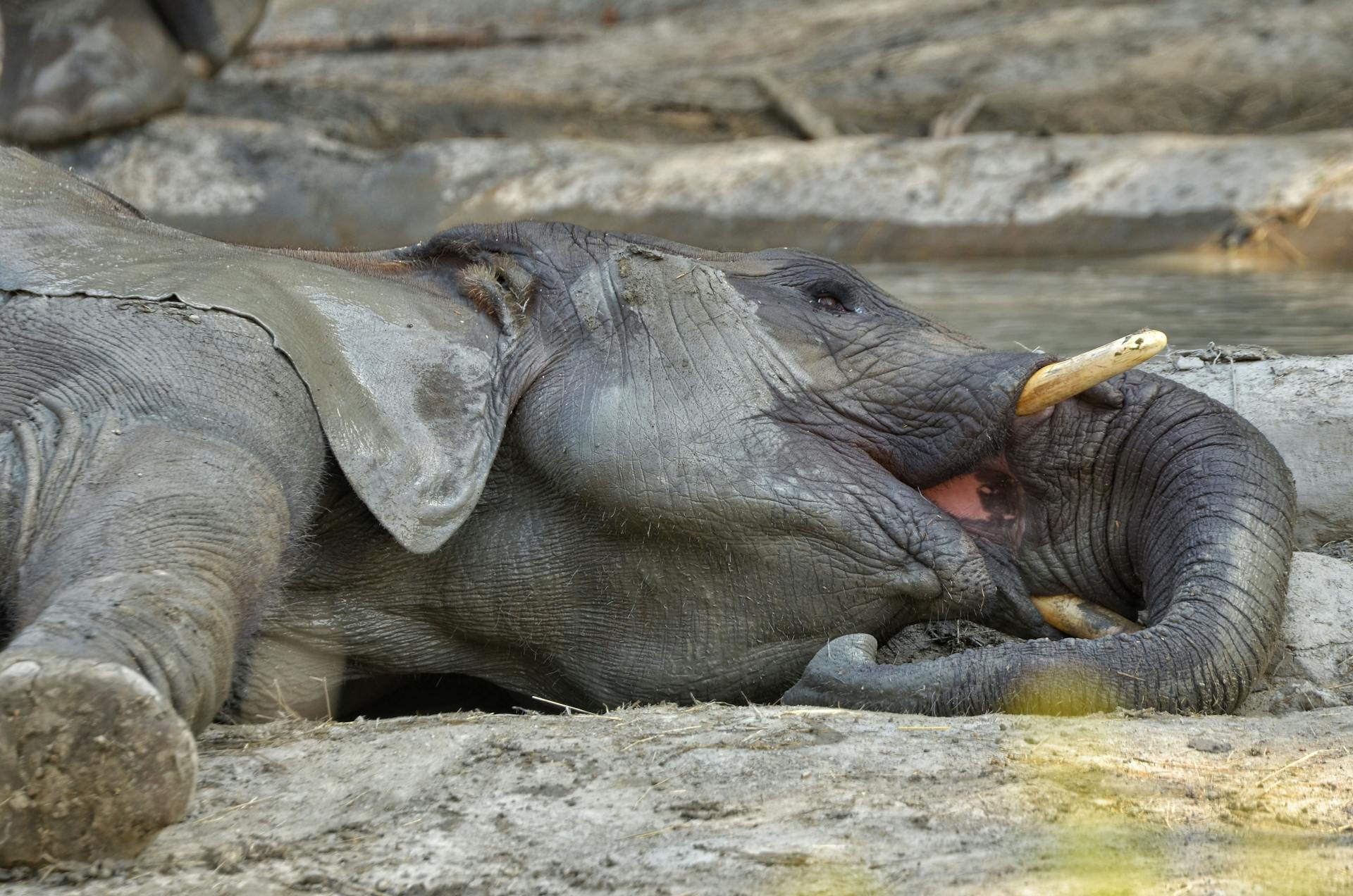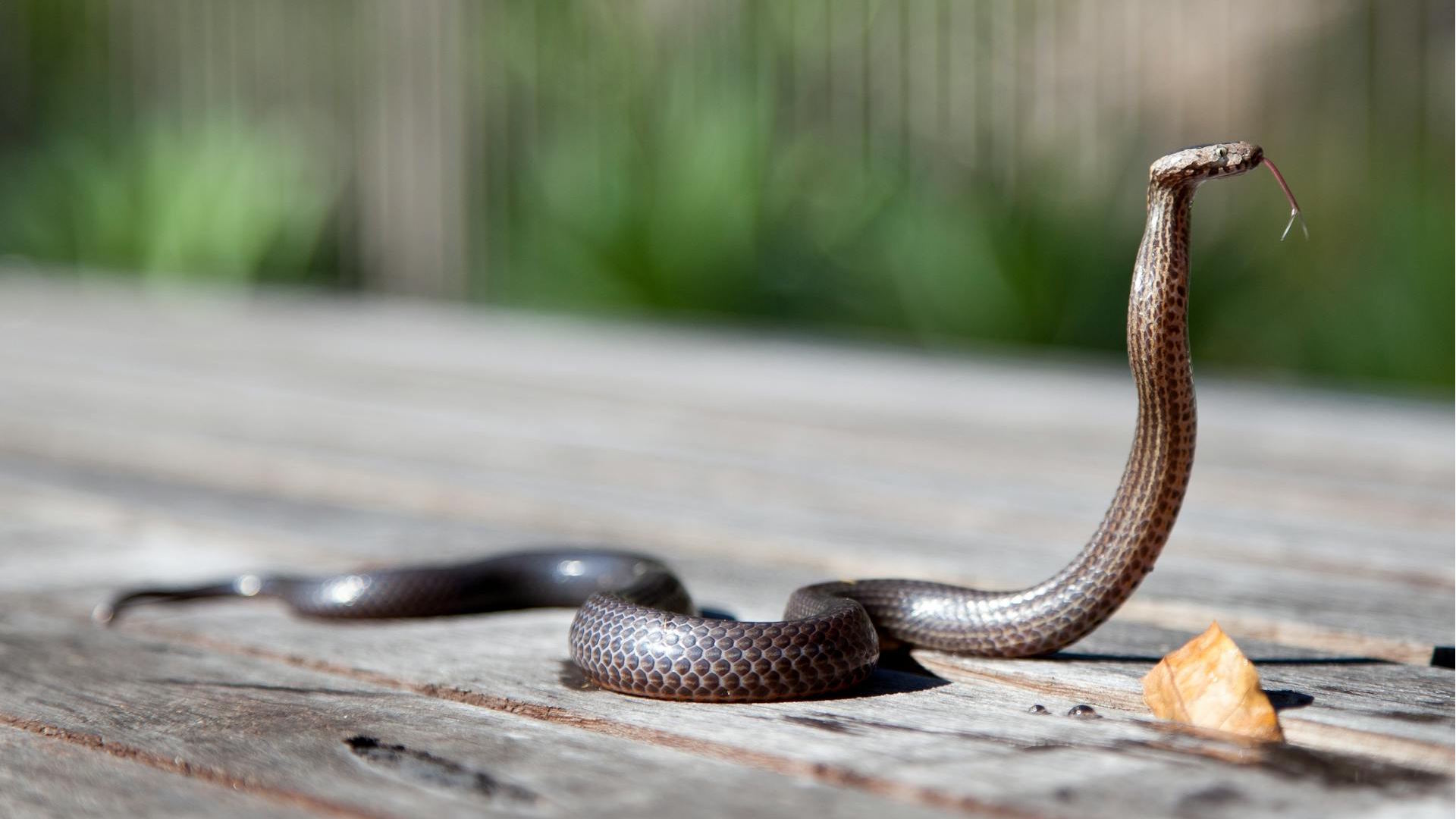Elephants stand as majestic symbols of strength and resilience in the animal kingdom. Weighing up to 13,000 pounds and standing 13 feet tall at the shoulder, these remarkable creatures dominate their environments through sheer size and power.
Yet despite their imposing presence, elephants harbor a surprising vulnerability that contradicts their seemingly impenetrable nature: susceptibility to snake venom.
This article explores the fascinating and alarming reality of how a single bite from certain snake species can bring down these magnificent giants, examining the complex interplay between venom biochemistry, elephant physiology, and the delicate balance of wilderness survival.
The Deadly Encounter: Elephants and Venomous Snakes

In the vast landscapes of Africa and Asia where elephants roam, these gentle giants share their habitat with some of the world’s most venomous snakes.
Black mambas, king cobras, gaboon vipers, and other highly venomous species occasionally cross paths with elephants, creating potential for deadly interactions.
Though such encounters are relatively rare in the wild, documented cases exist where elephants have succumbed to snake envenomation.
These incidents most commonly occur when elephants accidentally disturb snakes while foraging or walking, prompting defensive strikes typically aimed at the trunk or legs—areas with thinner skin and better venom absorption.
The relationship between these species represents a remarkable example of how even the mightiest creatures remain vulnerable to specialized predatory adaptations developed over millions of years of evolution.
Venom: Nature’s Biochemical Weapon
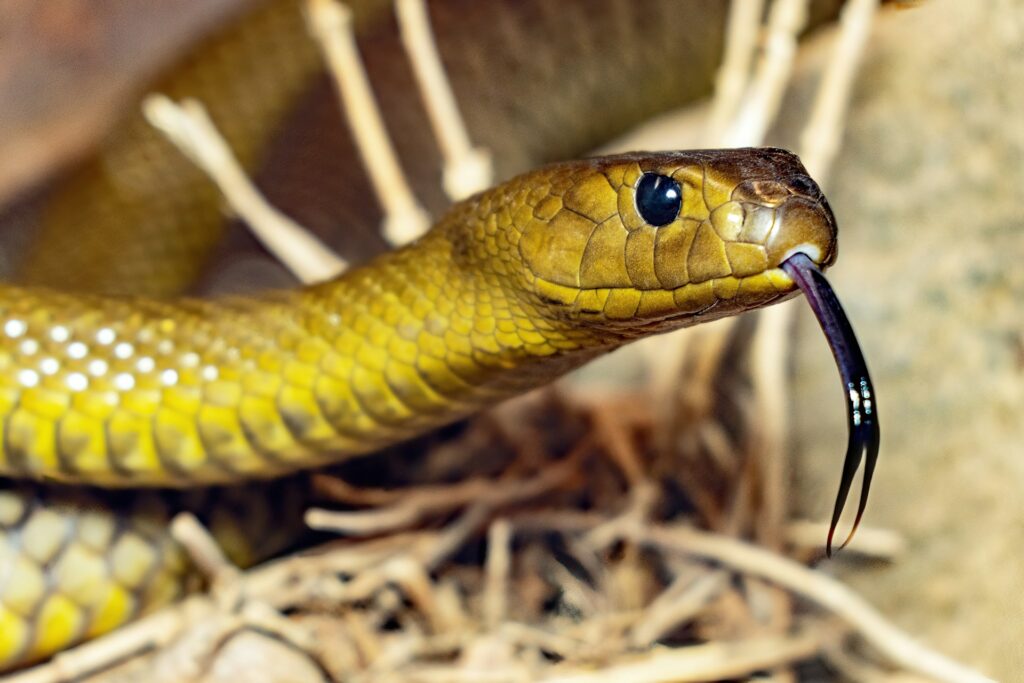
Snake venom ranks among nature’s most sophisticated biochemical weapons, comprising a complex cocktail of proteins, enzymes, and toxins specifically evolved to immobilize, kill, and digest prey.
Depending on the snake species, venom can contain neurotoxins that attack the nervous system, hemotoxins that destroy blood cells and vessels, cytotoxins that damage tissue, or often combinations of all three. These toxins work with terrifying efficiency, targeting fundamental biological processes essential for life.
For instance, neurotoxins from cobras and mambas block nerve impulse transmission, paralyzing muscles, including those required for breathing, while hemotoxins from vipers cause catastrophic internal bleeding and tissue destruction.
Even more remarkably, venom components have evolved specialized adaptations to overcome defenses in specific types of prey, making them particularly effective against certain species and explaining why some animals may be more vulnerable than others to particular snake venoms.
Elephant Vulnerabilities: Size Doesn’t Always Matter
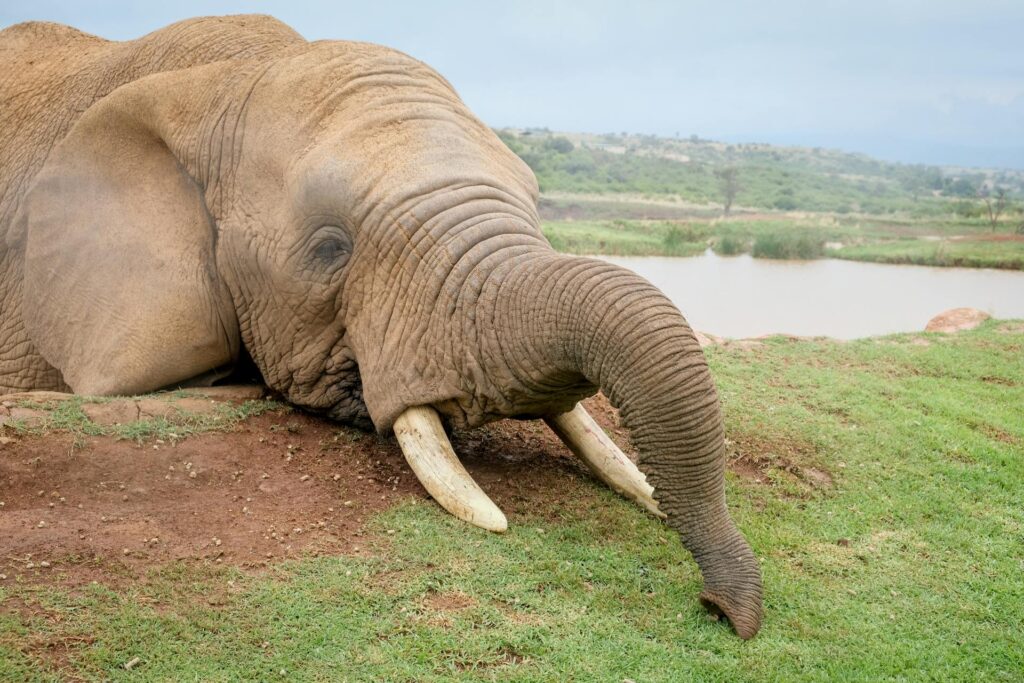
Counter to intuition, an elephant’s massive size actually creates specific vulnerabilities to snake venom rather than providing complete protection. While the sheer volume of an elephant’s bloodstream might theoretically dilute venom, several factors work against this potential advantage.
Elephants possess a relatively efficient circulatory system designed to pump blood throughout their enormous bodies, which inadvertently helps distribute venom more rapidly than in some smaller mammals.
Their large heart—weighing up to 27 pounds and beating at about 30 times per minute—pushes injected toxins quickly throughout the body.
Additionally, elephants have notably thin skin in certain areas, particularly around their trunk, ears, and underbelly, allowing for deeper venom penetration.
Perhaps most critically, elephants lack specific antibodies or natural biochemical resistance to snake venom that some smaller mammals have evolved, leaving them particularly defenseless against these specialized toxins.
The Biochemistry of Elephant Envenomation

When snake venom enters an elephant’s bloodstream, it initiates a cascading biological crisis that can overwhelm even such a massive body. Neurotoxic venoms attack the elephant’s central nervous system, potentially compromising vital functions like respiration and cardiac regulation.
Hemotoxic components begin breaking down blood vessels and destroying red blood cells, leading to internal hemorrhaging and tissue damage.
Cytotoxic elements attack cells directly, causing necrosis that can spread rapidly through tissues. The elephant’s immune system responds with an inflammatory response that, while designed to protect, can sometimes exacerbate the situation through anaphylactic reactions.
Unlike smaller mammals that might succumb within minutes, an elephant’s size means the progression toward death can take hours or even days—a slower but no less certain deterioration as vital systems gradually shut down under the relentless assault of the venom’s components.
Critical Mass: Why Venom Dosage Matters
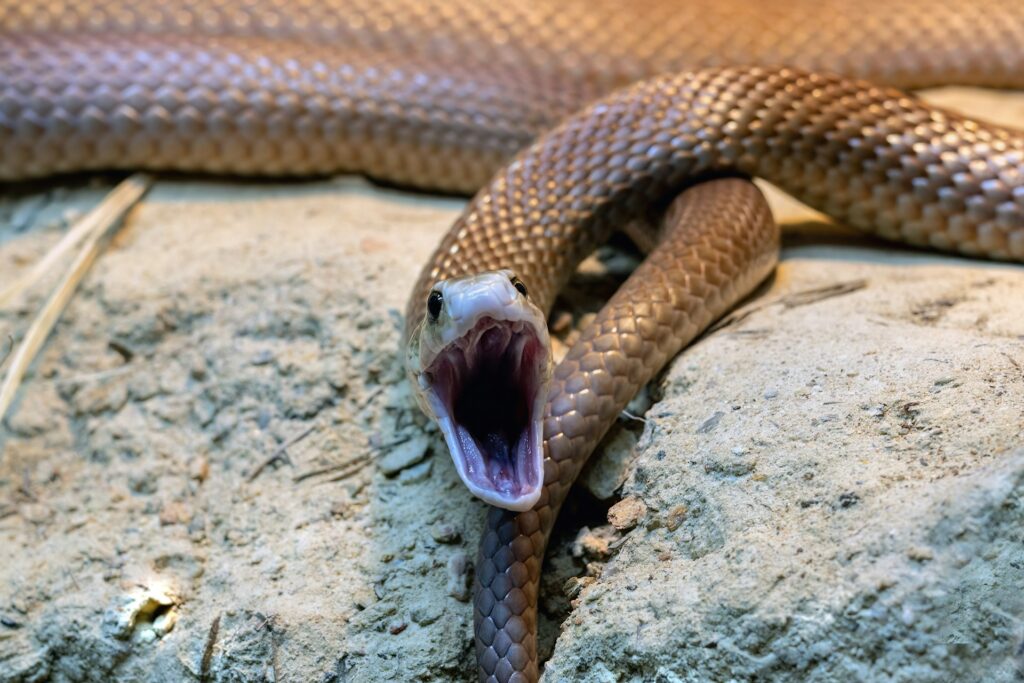
The question of venom dosage plays a crucial role in understanding elephant envenomation fatalities. While an elephant’s massive size would theoretically require proportionally more venom to cause death, certain snake species produce astonishingly large venom yields that prove sufficient even for such large animals.
The king cobra, capable of delivering up to 7ml of venom in a single bite, and the black mamba, with its 400mg average yield, possess enough toxins to overcome an elephant’s size advantage.
Moreover, the concept of “lethal dose” varies dramatically depending on the venom type and the specific vulnerabilities of the target species. Some venoms prove particularly effective against pachyderms because they target biological processes or systems where elephants lack specialized defenses.
Additionally, certain injection sites prove more deadly than others—a bite to the trunk, with its rich blood supply and direct connection to the respiratory system, delivers venom more effectively than one to a thicker-skinned body part, demonstrating that strategic envenomation can overcome the apparent protection of sheer body mass.
The Most Dangerous Culprits: Snakes That Threaten Elephants

Several snake species possess the potent venom and physical capabilities needed to potentially kill an elephant. The black mamba stands as perhaps the most dangerous, combining highly potent neurotoxins with exceptional speed and aggressiveness when threatened.
A single black mamba can deliver multiple strikes in rapid succession, potentially injecting enough venom to overcome even an elephant’s size.
King cobras, the world’s longest venomous snakes, reaching up to 18 feet, produce massive volumes of neurotoxic venom specifically evolved to target other vertebrates’ nervous systems.
In Africa, the gaboon viper presents another serious threat, possessing the longest fangs of any snake (up to two inches) and delivering among the highest venom yields, making it capable of deep tissue penetration and massive toxin delivery.
While pythons and anacondas pose no venomous threat to elephants, these constrictors occasionally attack elephant calves, though rarely with success against adults, representing a different type of predatory relationship between snakes and elephants.
Documented Cases: When Giants Fall
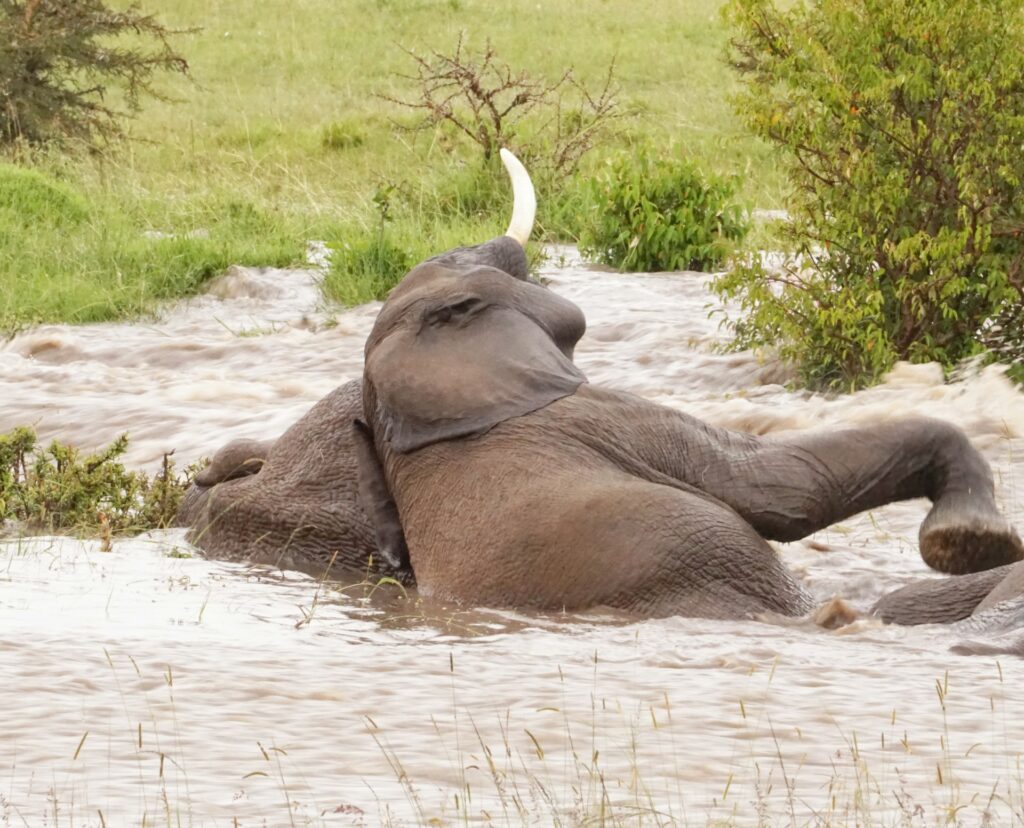
While scientific documentation of elephant deaths from snakebites remains relatively sparse, several confirmed cases have been recorded by wildlife researchers and park rangers.
In 2016, researchers in South Africa’s Kruger National Park documented the death of a young elephant bull approximately 24 hours after a suspected black mamba bite to its trunk, with tissue analysis later confirming venom presence.
Similar cases have been reported from wildlife sanctuaries in India, where king cobra encounters occasionally prove fatal for Asian elephant calves and, more rarely, adults.
Wildlife veterinarians have described the progression of symptoms in affected elephants, noting initial localized swelling followed by progressive weakness, respiratory distress, and eventual collapse.
These documented cases typically feature younger or already compromised elephants, though healthy adults have also succumbed to severe envenomation.
Such incidents, while uncommon, provide sobering evidence of venom’s potential to overcome even the most physically imposing animals on land.
Elephant Defensive Behaviors Against Snakes
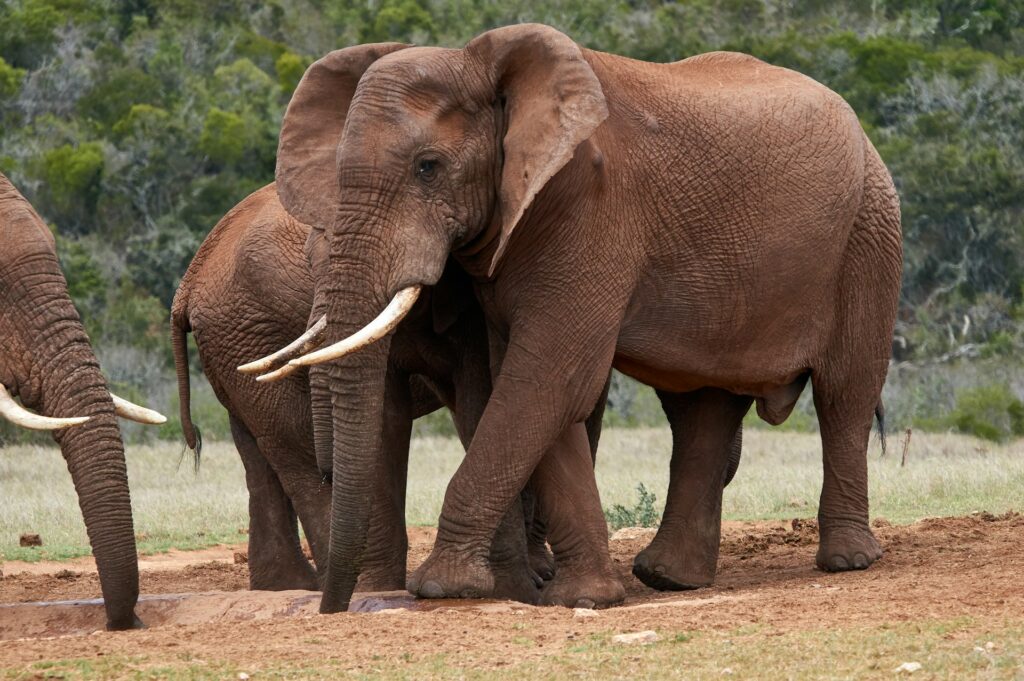
Elephants have developed remarkable behavioral adaptations to mitigate the threat posed by venomous snakes in their environment.
Their exceptional cognition allows them to recognize and remember dangerous snake species, with evidence suggesting this knowledge is passed from older herd members to younger ones through observational learning.
When encountering snakes, elephants typically exhibit a distinctive alertness, raising their trunks to smell the air and producing warning vocalizations to alert other herd members.
Many observers have documented elephants intentionally stomping or throwing objects toward snake locations, effectively neutralizing threats from a safe distance.
Perhaps most impressively, elephants demonstrate remarkable trunk control when foraging in snake-prone areas, using delicate movements to investigate potential hiding spots before committing to feed or drink.
These behavioral adaptations, combined with their general wariness, significantly reduce—though cannot completely eliminate—the risk of deadly encounters with venomous snakes.
Treatment Challenges: Saving an Envenomated Elephant
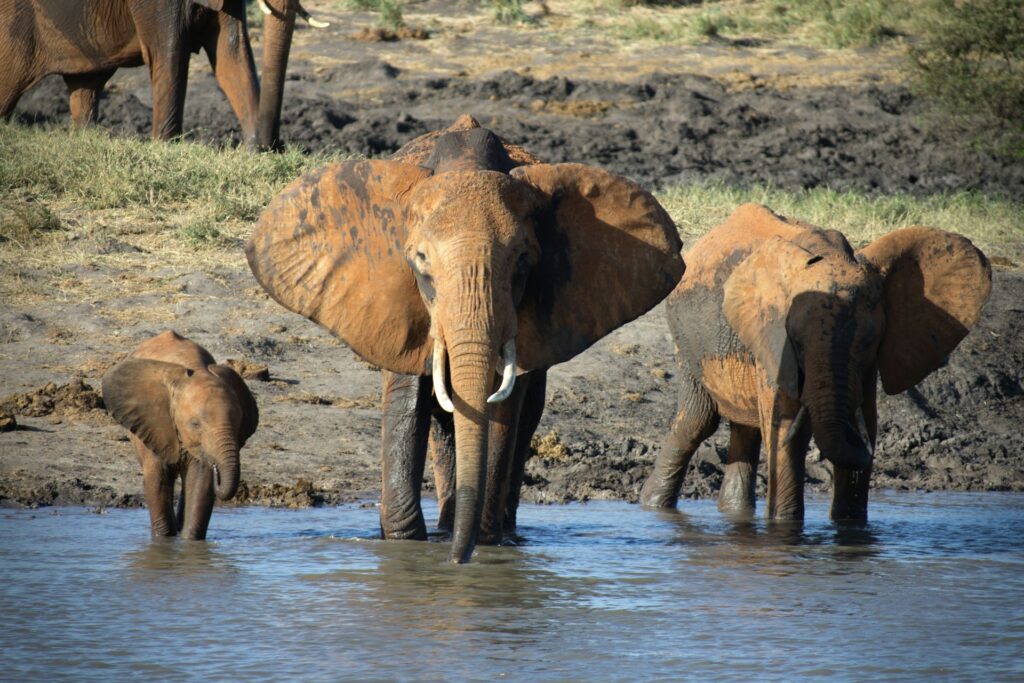
Treating an elephant suffering from a venomous snakebite presents extraordinary veterinary challenges that highlight the severity of such encounters.
The sheer size of an elephant complicates every aspect of treatment, beginning with the massive antivenom requirements—potentially dozens of vials that would typically treat numerous human patients.
Calculating appropriate dosages becomes problematic due to limited research on elephant-specific antivenom protocols, forcing veterinarians to extrapolate from other species. Administration presents further difficulties, as intravenous access often requires specialized equipment and techniques not readily available in field settings where most bites occur.
Time works against treatment efforts as well, with remote locations delaying intervention until venom has already caused significant damage.
Perhaps most fundamentally, identifying a snakebite as the cause of an elephant’s distress proves challenging in wilderness settings, where symptoms might initially be attributed to other conditions until too late for effective intervention, highlighting the particular vulnerability of wild elephants compared to those in managed care situations.
Evolutionary Perspectives: The Arms Race Between Predator and Prey
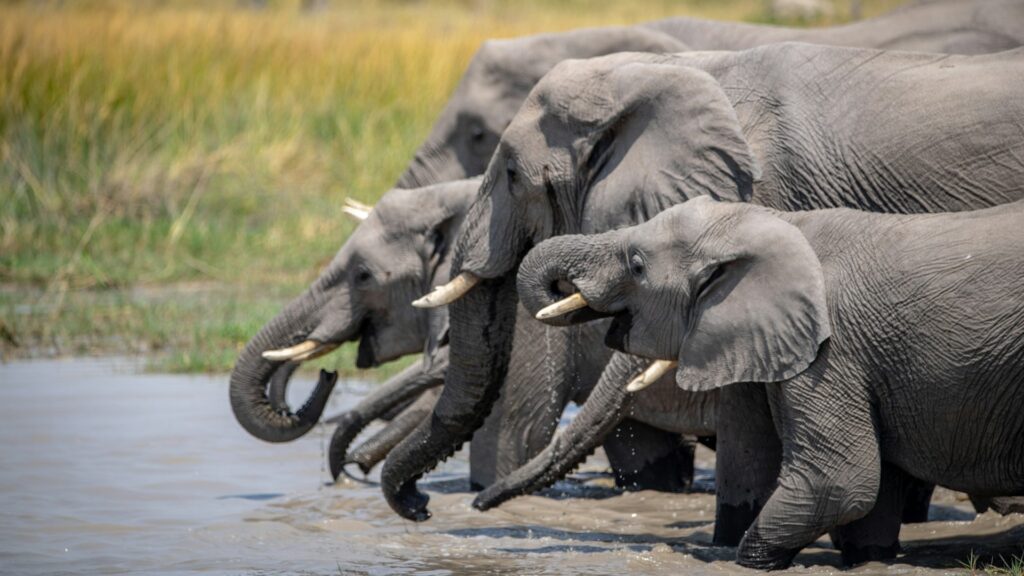
The deadly potential of snake venom against elephants exemplifies the fascinating evolutionary arms race between predators and prey in natural ecosystems.
While snakes didn’t evolve their venom specifically to target elephants, these toxins emerged through millions of years of adaptation to efficiently disable various prey animals by exploiting fundamental vertebrate physiological vulnerabilities.
Elephants, evolving along separate paths, developed impressive physical defenses, including thick skin and massive size, but these adaptations primarily responded to different predatory threats like big cats rather than venomous snakes.
This evolutionary mismatch creates the unusual vulnerability we observe today, where specialized biochemical weapons overcome physical defenses.
Interestingly, some mammals frequently targeted by snakes have developed specific venom resistance through genetic adaptations—mongoose species, for instance, possess modified acetylcholine receptors that render certain neurotoxins ineffective against them.
Elephants, rarely targeted intentionally by snakes, never experienced the selective pressure to develop similar biochemical countermeasures, leaving them paradoxically more vulnerable than some much smaller mammals.
Conservation Implications: Snake Encounters in Shrinking Habitats
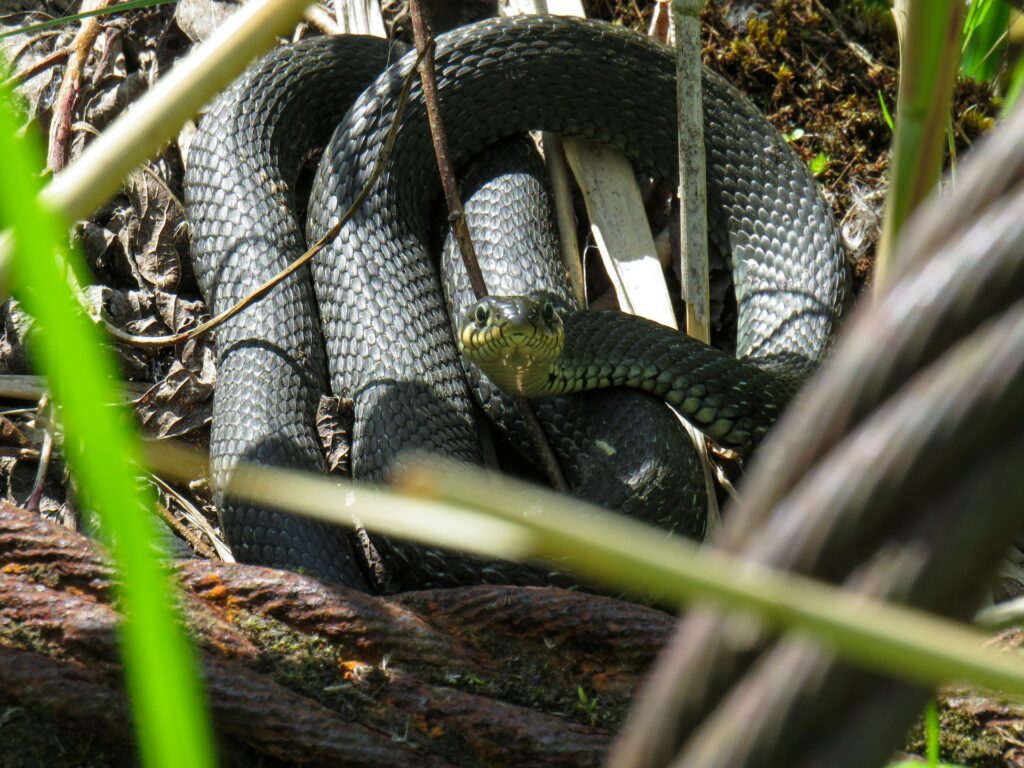
As human development increasingly encroaches on natural habitats, the dynamics between elephants and venomous snakes face new pressures with potential conservation implications.
Habitat fragmentation forces elephants into smaller, more confined ranges where encounters with snakes may become more frequent due to increased density of both species in remaining wilderness areas.
Human-made changes to landscapes can create artificial concentrations around remaining water sources or food availability, potentially increasing dangerous interaction rates.
Climate change further complicates this picture, as shifting ranges and behavioral patterns may bring species into novel contact patterns with unpredictable outcomes.
For endangered elephant populations, particularly scattered groups with limited genetic diversity, the loss of even a few individuals to unexpected causes like snakebite could have disproportionate impacts on population viability.
Conservation managers increasingly monitor and document such interspecies dynamics as part of holistic ecosystem management approaches, recognizing that seemingly rare events can have cascading effects on vulnerable populations.
Human Dimensions: Cultural Perceptions and Folklore
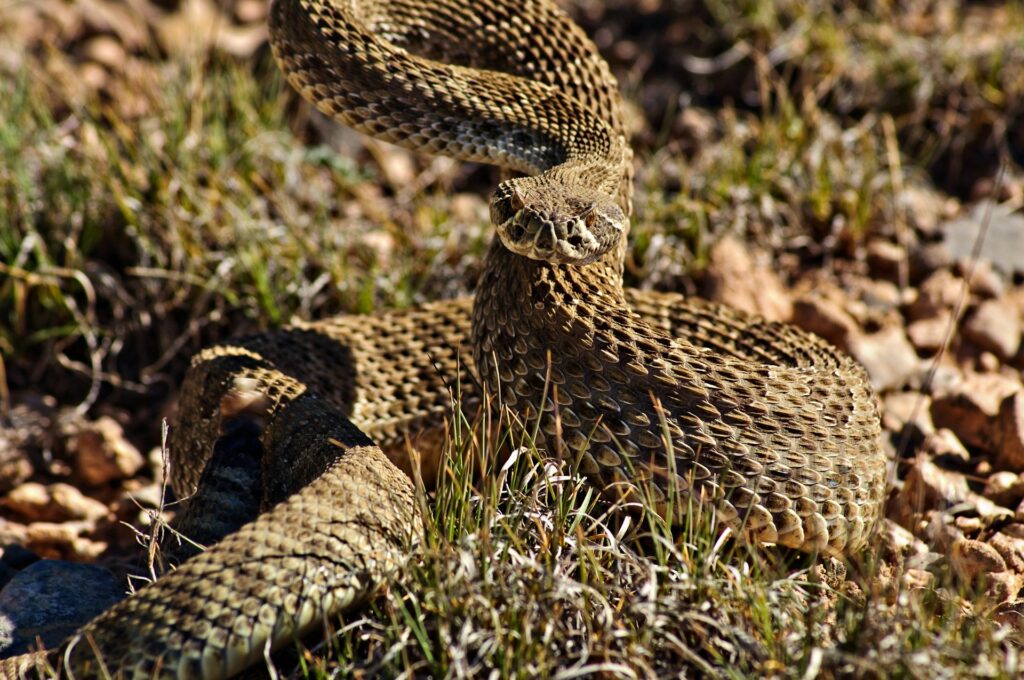
The deadly potential of snakes against elephants has not escaped human notice, featuring prominently in the cultural traditions of many societies that share landscapes with these animals.
In parts of South Asia, folk stories recount dramatic encounters between cobras and elephants, often anthropomorphizing both creatures as embodiments of opposing forces like cunning versus strength.
Several African cultures incorporate the elephant-snake dynamic into traditional knowledge systems, warning about the danger certain snakes pose even to the mightiest animals.
Colonial-era hunters and naturalists documented local beliefs about elephant vulnerabilities to snakebites, sometimes dismissing them as superstition before later scientific confirmation of these phenomena.
Interestingly, these cultural narratives often contain practical knowledge about elephant behavior around snakes, suggesting keen observational skills passed through generations.
Such traditional ecological knowledge increasingly complements scientific research, offering insights into historical interaction patterns and behavioral adaptations that modern short-term studies might miss, demonstrating the value of integrating diverse knowledge systems in understanding complex ecological relationships.
The Medical Frontier: What Elephant Envenomation Teaches Us
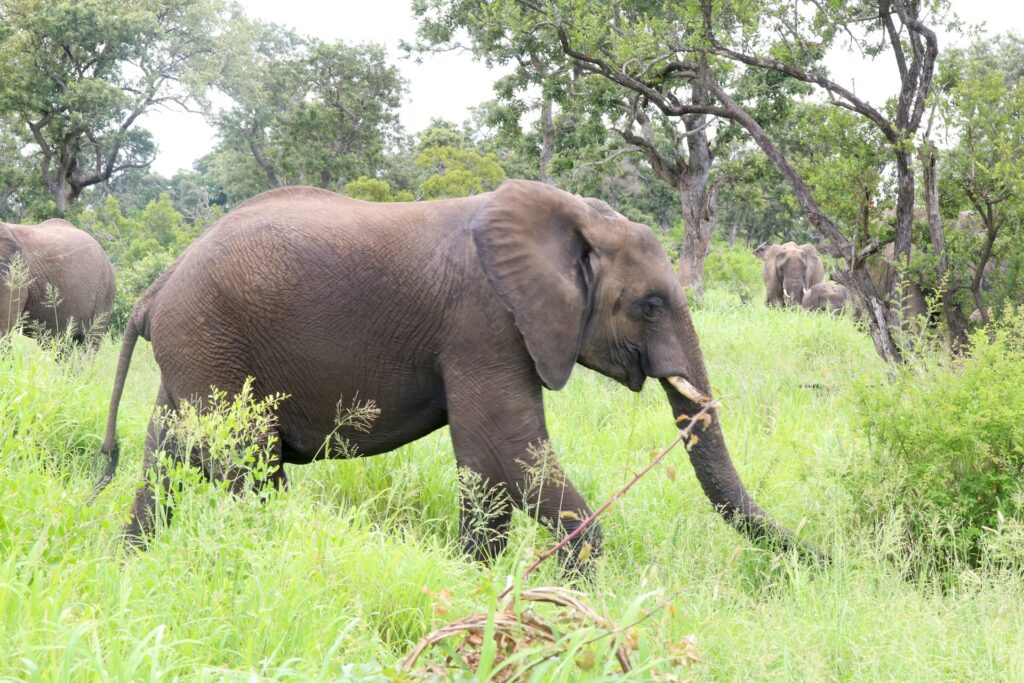
The study of snake venom effects on elephants has opened fascinating avenues for medical research with potential human applications. Examining how venom overcomes such massive bodies provides unique insights into fundamental physiological processes and potential treatment approaches for envenomation.
Researchers studying elephant responses to specific venom components have identified novel reaction pathways that might inform human antivenom development, particularly regarding dosage scaling and neutralization strategies.
Additionally, the rapid tissue and cellular damage observed in elephant envenomation cases has helped scientists better understand venom activity at molecular levels, potentially leading to improved emergency protocols for human victims.
Comparative studies between species with natural venom resistance and vulnerable species like elephants highlight genetic and biochemical mechanisms that might eventually inform medical countermeasures through biomimicry approaches.
This research exemplifies how even rare and specialized biological interactions can provide valuable knowledge applicable across species boundaries, demonstrating the interconnected nature of medical discovery in the emerging field of zoopharmacognosy—the study of how animal responses to toxins can inform human medicine.
The Circle of Life: Predator-Prey Dynamics in Perspective

The ability of a relatively small snake to kill a magnificent elephant represents one of nature’s most profound paradoxes, revealing the complex balance of adaptations that shape ecosystem dynamics.
This relationship underscores how evolutionary advantages emerge not only through physical dominance but also through specialized biochemical weaponry developed over millions of years.
While such elephant deaths remain relatively rare events in natural settings, they serve as powerful reminders that no species—regardless of size or strength—exists beyond the reach of evolutionary adaptations.
These interactions contribute to the intricate web of checks and balances that maintain healthy ecosystems, where even apex herbivores remain integrated within broader vulnerability contexts.
Furthermore, these dynamics illustrate how natural selection operates across multiple dimensions simultaneously, balancing physical defenses against biochemical attacks in never-ending adaptive cycles.
By appreciating such unexpected vulnerability in Earth’s largest land animal, we gain deeper insight into the fundamental principles governing all life—where specialization, not merely size or strength, often determines survival in nature’s complex theater.
Conclusion
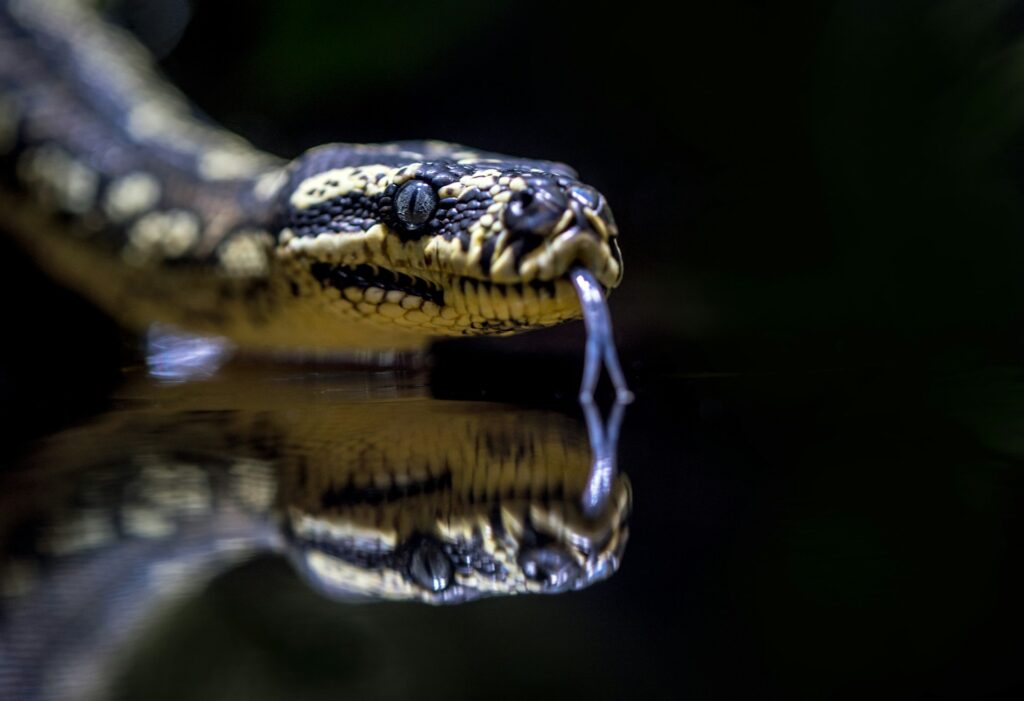
The deadly potential of a snake’s bite against an elephant stands as one of nature’s most remarkable power inversions—a testament to the complexity of evolutionary adaptations that shape predator-prey relationships.
Through specialized venom biochemistry, precise delivery mechanisms, and exploitation of specific vulnerabilities, certain snakes possess the capability to overcome adversaries thousands of times their size.
This reality reminds us that nature’s balance relies not only on physical dominance but also on specialized adaptations developed through evolutionary time.
While elephants have developed impressive behavioral strategies to minimize such encounters, their vulnerability to these potent toxins persists as a fascinating biological paradox.
Understanding these dynamics enriches our appreciation for the intricate relationships between species and underscores the delicate balance that sustains Earth’s most complex ecosystems.

